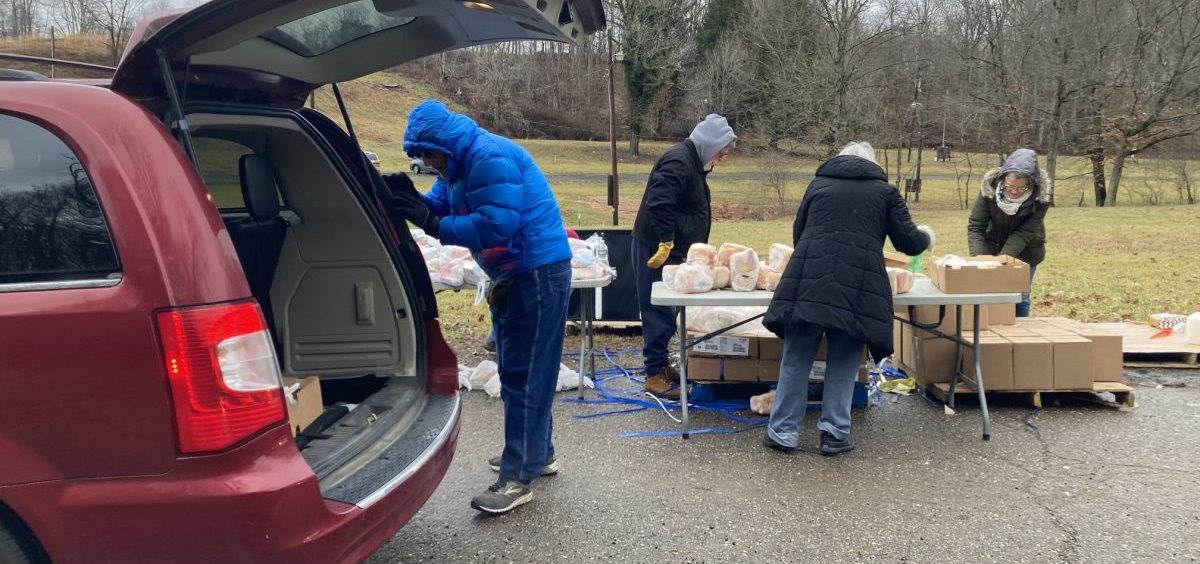News

Despite some money from the state, the Southeast Ohio Food Bank struggles to meet growing demand
By: Theo Peck-Suzuki | Report for America
Posted on:
POMEROY, Ohio (WOUB/Report for America) — The Southeast Ohio Food Bank has returned to doing mobile food distributions, thanks to support from local partners and the state government.
Unfortunately, the need in the communities it serves continues to drastically outpace its available resources.
The challenge was clear last Friday, when volunteers stationed at the Meigs County Fairground had to turn an estimated 10 to 15 families away after turnout was unexpectedly high. In all, the food bank estimates it handed out food to 221 families.
Community members who did receive food said it would make a substantial impact.
“There’s no other way to say it other than this is a huge blessing,” said Dale, who turned his engine off while he spoke to save gas. Like many in Southeast Ohio, he’s on a fixed income. The money from his checks no longer lasts long enough.
“After bills are paid, (I) might have 50 bucks to last me three weeks,” he said.
“You try to find the cheapest stuff,” he added with a laugh, “but there is no cheap stuff.”

“We have heard from a lot of our neighbors that they are being forced to choose between paying their bills or buying groceries,” she said.
The Southeast Ohio Food Bank partnered with the managed care provider CareSource to bring their mobile distributions back after canceling them over the summer due to insufficient supply. There were plenty of volunteers at the Meigs distribution, courtesy of the advocacy group Indivisible Appalachian Ohio.
This time, much of the food came through financial support from the DeWine administration, which provided $15 million to food banks statewide amid crippling supply shortages last year.
That money was significantly less than what food banks requested. Nevertheless, it enabled the Southeast Ohio Food Bank to buy additional meat and dairy products for this event.

The Ohio Association of Food Banks said it is continuing to work with the Ohio General Assembly and the governor’s office to secure more funding. In December, the General Assembly earmarked an additional $25 million for food banks in House Bill 45.
Like the previous $15 million, that money is specifically set aside for food purchases. It does not invest in expanding the overall food bank network infrastructure, which food banks themselves identified as important for reducing food insecurity in the long run.
HAPCAP’s Lydia Dippre, who was also at the Meigs distribution, said she’s concerned the situation will only get worse when extended COVID-era SNAP benefits expire at the beginning of March.
“We are going to see an increase in demand, and I worry if our food supply is gonna be able to keep up,” she said.

